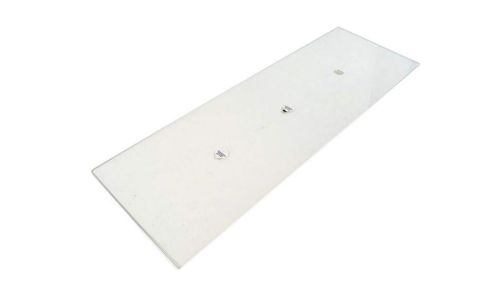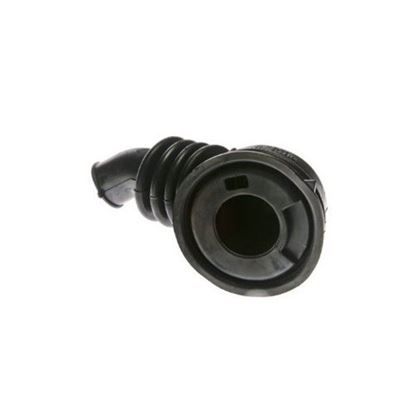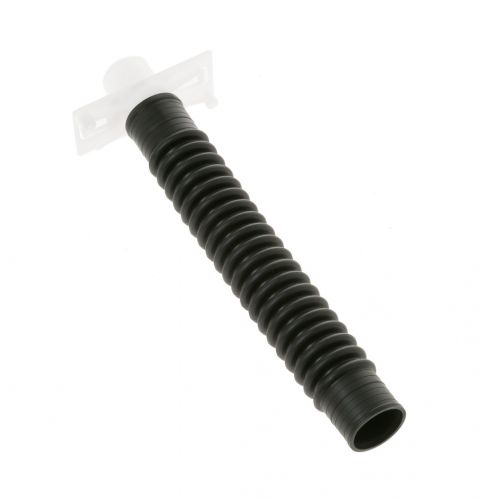
How to Keep Your Laundry and Kitchen Spotless: Top Cleaning Tips
For health and efficiency, it is not enough to be reasonably clean in spaces, such as a laundry or kitchen, where others interact with you. A clean environment is important in promoting overall well-being, increasing productivity, and creating a nice environment for daily activities. Whether it's the laundry area where clothes are washed and dried or the kitchen where meals are prepared, cleanliness is paramount for a healthy and thriving living environment.
|
Table of contents |
Must-Have Cleaning Supplies
Laundry cleaning supplies
- Laundry detergent: Laundry detergent is an essential product to clean your clothes in different types such as liquid, powder, or pods.
- Fabric softener: Perfect for adding a pleasant fragrance to the laundry to soften fabric and reduce static.
- Stain remover: It works well at targeting challenging stains on clothing or linens. Sprays, sticks, and gels are all stain removers.
- Bleach: Good for whitening white fabrics and sanitizing laundry. There are chlorine and oxygen-based variations.
- Laundry bags: For delicates, lingerie, and things that need more pampering when it comes to washing these can be used.
Kitchen cleaning supplies
- All-purpose cleaner: Multi-purpose cleaning solution for many surfaces including countertops, appliances, and tiles.
- Disinfectant spray or wipes: For sanitizing kitchen surfaces, this one is particularly important in food preparation areas.
- Degreaser: This is ideal for getting rid of heavy grease buildup on stovetops, range hoods, and kitchen cabinets.
- Sponges and scrubbers: Useful for dishwashing, cleaning, etc.
- Dish soap: For hand washing dishes and cutlery, in different scents and formulas.
- Oven cleaner: Made specifically to remove baked-on food and grease from ovens and grills.
Organization tools
- Storage containers: Perfect for putting pantry items, dry goods, and leftover foods in the kitchen.
- Baskets and bins: A great way to group and organize all sorts of things from cleaning supplies to kitchen tools.
- Drawer organizers: A great utility for tidying up the clutter in the drawers of kitchen utensils, cutlery, etc.
- Shelving units: Great for cabinets and pantries to use the vertical space for additional storage option
Effective Strategies for Cleaning Laundry Room
Regular cleaning and maintenance of washing machines and dryers are crucial for ensuring their optimal performance and longevity. It means wiping down the exteriors of every appliance, dripping over for leaks or smells, and blowing away dust and debris outside the appliances.
Deep clean your washing machine
- Clean the drum: Clean the washing machine drum with vinegar by running a hot water cycle. Put two cups of white vinegar in the detergent dispenser and run a complete wash cycle with no laundry. It helps get rid of built-up residue and odors.
- Clean the dispensers: If your machine has detergent, bleach, and fabric softener dispensers, remove and clean them. Place them in a solution of warm water and a mild detergent, brush off any residue, rinse, and reinstall.
Dryer care
- Lint trap maintenance: Use a lint trap to clean after each drying cycle to prevent the buildup of lint that can impair efficiency and be a fire hazard. To clean lint in and around the lint trap region, use a lint brush or vacuum attachment.
- Vent cleaning: Make sure to clean the dryer vent periodically to extend the life of your dryer (lint buildup can reduce airflow and be a fire hazard). If you need to, hire a professional for deep vent cleaning.
Organizing laundry supplies
- Storage containers: Put goods such as laundry detergents, softeners, and so on into labeled storage containers or baskets. Not only does this keep the space tidy but it also makes it easy to reach the products you need when doing laundry.
- Wall-mounted racks or shelves: You can install wall-mounted racks or shelves to put things such as laundry baskets, ironing supplies, and hangers away from the floor and clean.
Best Practices for a Pristine Kitchen
Here are some kitchen cleaning tips covering daily habits, deep cleaning schedules, managing spills, and appliance maintenance:
|
Category |
Tips |
|
Daily cleaning Habits |
|
|
Deep cleaning the kitchen |
|
|
Managing food spills and stains |
|
|
Appliance maintenance |
|
Strategies for Handling Stubborn Stains and Messes
Here are some best practices for treating common stains, strategies for dealing with tough kitchen stains, and natural cleaning solutions using household items:
Laundry stains
- Wine: When you have a wine stain immediately blot the spot with a clean cloth to blot up as much of the liquid as you can. Then, take the stain, apply dishwashing liquid and hydrogen peroxide to it, let it sit for a few minutes, and launder as usual.
- Grease: If you want to get rid of grease stains, sprinkle some cornstarch or talcum powder over the grease. After a couple of hours, brush off the powder, apply a small amount of dishwashing liquid to the stain, and launder as usual.
- Ink: To remove the ink stain, place the stained fabric over a clean white cloth or paper towel. Instead, dab the stain with rubbing alcohol using another clean cloth.
Kitchen stains
- Countertops: For some tough stains on countertops, create a paste out of baking soda and water. Mix the paste and apply it to the stained area, leave it for a bit, then scrub gently with a soft brush or sponge. Rinse thoroughly with water.
- Floors: If on tile or laminate floors, use a combination of white vinegar and water, equal parts. Let the solution sit for a few minutes on the stained area and then scrub it off with a mop or sponge. A paste of baking soda and water can sometimes work for grout stains.
- Appliances: Cleaning stainless appliances, like refrigerators and dishwashers, with 50:50 water to vinegar solution. Wipe in the direction of the grain with a soft cloth, apply the solution, buff with a dry cloth for a streak-free shine.
Natural cleaning solutions
- Vinegar: Vinegar is a great natural cleaner. To clean glass surfaces and sanitize countertops mix equal parts vinegar and water in a spray bottle. You can also use it to get rid of odors in the dishwasher and washing machine by running a cycle with vinegar instead of detergent.
- Baking soda: It’s great for absorbing odors and cleaning surfaces. To clean stainless steel sinks, remove odors from the refrigerator or scrub stubborn stains in the kitchen, create a paste of baking soda and water.
These natural cleaning solutions not only help to remove hard stains and messes but also help promote eco-friendly cleaning practices that are safe for your family and the environment.
Find quick fixes for the top 12 appliance issues and enjoy hassle-free functionality
Decluttering and Streamlining Space
Here are some tips for decluttering and organizing the laundry room, and kitchen, and the importance of regular decluttering:
Laundry room organization
- Decluttering: Declutter the space first. Get rid of the items that don’t belong in the laundry room and donate or throw away the things that you no longer need.
- Storage solutions: Store laundry supplies in storage baskets, shelves, and cabinets. Keep detergent, fabric softener, and other household supplies in labeled containers.
- Sort and separate: Designate areas for pre-sorted laundry, clean laundry, and ironing. Separate whites, colors, and delicate items in hampers labeled.
- Maximize space: If there’s no room for a full-sized ironing board, install a wall-mounted drying rack or foldable table for ironing.
- Regular maintenance: Tidying up the laundry room after each wash cycle and checking every so often for lost items also helps keep it tidy.
Kitchen organization
- Pantry organization: Group related items together and use stackable containers to make the most of pantry space. Label items that you’ll want to be able to find quickly too.
- Drawer management: Drawer dividers keep utensils and kitchen tools organized. If you’re using baking sheets and cutting boards, consider using vertical dividers.
- Clear countertops: Store small appliances in cabinets when not in use to keep countertops clutter-free. Keep things tidy by displaying only essential items.
- Utilize wall space: Hang pots & pans and cooking utensils on the wall instead of keeping them in cabinets.
- Regular cleanouts: Make a practice of checking expiration dates on food items and throwing out expired or unused products regularly. Additionally, declutter your refrigerator and freezer now and then and throw away old or expired items.
Regular decluttering
- Prevents overcrowding: Regular decluttering helps avoid overcrowding spaces with extraneous things so there is room to use what storage areas have to offer.
- Maintains functionality: Assessment and decluttering allow the spaces to remain functional, making it easier to find things and to get things done.
- Reduces stress: A clutter-free environment helps you feel calm and helps you get through the day easier as it reduces visual and mental clutter.
Preventative Cleaning Techniques
Preventative Measures for maintaining a clean and organized kitchen environment, including dishwasher and sink area, can be achieved through the following strategies:
|
Preventative measure |
Description |
|
Routine cleaning schedule |
|
|
Daily, weekly, monthly tasks |
|
|
Using smart storage solutions |
|
|
Under-sink organization |
|
|
Efficient kitchen storage |
|
Experience the next generation of laundry care with 2024's most innovative washers and dryers
Maintaining a clean kitchen and laundry area is essential for a healthy and comfortable living environment. By adopting the discussed cleaning tips and routines, you can reduce the risk of foodborne illnesses, keep clothes fresh, and create a pleasant living space. A clean environment contributes to overall well-being, promoting physical health and reducing stress. HnK Parts provides a broad range of top-quality kitchen appliance parts from leading manufacturers at affordable prices. Our inventory includes everything from dishwashers and dryers to microwaves and refrigerators. We have all your needs taken care of.
FAQs
How often should I clean my laundry room?
It is recommended to clean your laundry room once a week to prevent dirt and grime buildup.
How often should I deep clean my kitchen?
Aim to deep clean your kitchen at least once a month, focusing on areas like the oven, refrigerator, and pantry shelves. Regular maintenance will help keep your kitchen spotless in the long run.
How can I prevent odors in the laundry room?
To prevent odors in the laundry room, ensure proper ventilation, clean the lint trap regularly, and leave the washing machine door open between loads to allow it to dry.











